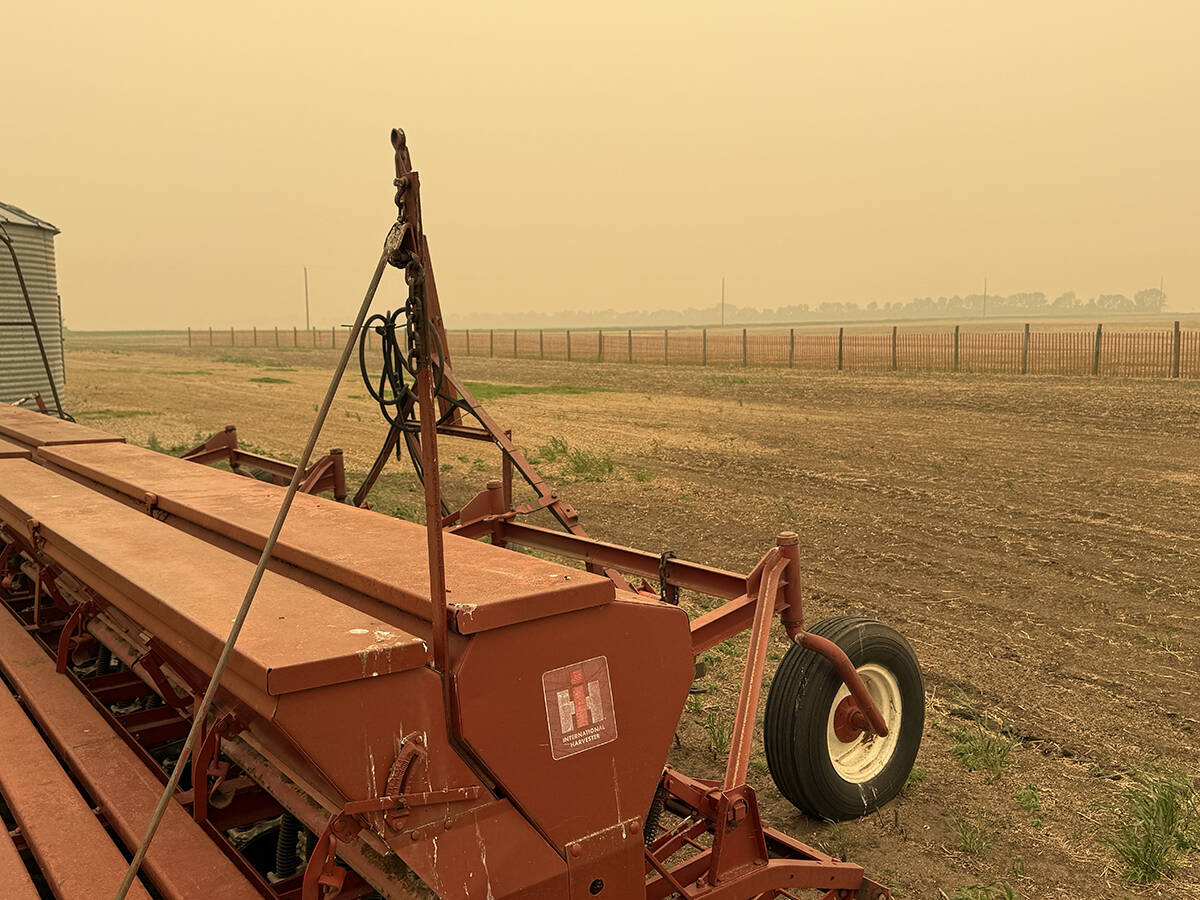Complaints from homeowners about noisy crows are loud enough to send several prairie communities in search of a solution.
Alcide Cloutier, town administrator in Vulcan, Alta., said they haven’t yet declared war on crows, but are trying to find ways to get rid of them.
“It’s bad,” Cloutier said. “There are a lot of them. They’re very noisy and they cause damage to the garden.”
He said town council has had several complaints about the birds destroying song birds’ nests, picking at garbage or waking residents early in the morning with noisy calls.
Read Also

Wildfires have unexpected upside this year
One farmer feels smoke from nearby wildfires shrouded the July skies and protected his crop from the sun’s burning rays, resulting in more seeds per pod and more pods per plant.
Residents are trying to discourage crows from settling in town by destroying their nests and trapping them.
“People are happy we’re doing it,” he said.
Workers in a picker truck are destroying nests high in the trees, but are having less luck with the trap.
Workers started by filling a specially designed crow trap with food and leaving the door open.
“We tried to create an atmosphere that it is a corner restaurant,” Cloutier said.
The birds ate all the food, but the next week when the trap was set, the crows didn’t go in the cage.
“We haven’t caught any crows.”
Workers in Camrose have been destroying crows’ nests for three years, said Chris Clarkson, parks director with the city’s leisure services department.
In the first year they removed 100 nests, last year 130 and so far this year they’ve removed more than 50 nests.
“Council got a lot of calls from people that the crows were becoming a nuisance to them,” Clarkson said.
While the program has reduced crow numbers, he said, it hasn’t been a perfect solution.
“We’re still having problems,” he said, adding it would take several more years to know if the program is effective or has just forced the birds to areas outside the city.
Removing nests is not only labour intensive but can also be hazardous to city crews. More than once workers have been surprised to find the crow’s nests occupied by hawks, not happy with the intrusion.
In North Battleford, Sask., the city is taking a straight-on approach to crow control, shooting them with a high-powered pellet gun.
The program has been in place for more than five years and since April, a special constable with the city’s bylaw enforcement group has shot 40 crows.
Like his counterparts in other communities, North Battleford bylaw enforcement officer Glen Ross isn’t sure how effective the program has been, but he does know residents are happy.
“The public perception is they’re very pleased with it and really appreciate the city’s effort,” Ross said.
“The complaints are less.”
Glen Hvenegaard, a professor of geographic and environmental studies at Augustana University in Camrose, said an effective crow control program takes more than just removing nests.
He said towns and cities have become the perfect “safe zone” for the birds. Residents aren’t allowed to shoot them and their natural predators, such as owls and hawks, are no longer found in cities. As well, they are among the most intelligent species of birds.
“They learn quickly how to survive and thrive.”
Most houses offer an all-day buffet for the animals, with uncovered garbage left in the back yard and dog and cat food left at the back step.
“We should make cities unattractive for crows.”
Not all people, including Hvenegaard, want the crows driven out of their communities. Recently his young family took a special interest in the progress of a crow and its family in a tree on the boulevard in front of their house.
Someone else in the neighbourhood complained and the nest was removed, much to the disappointment of the family.
“We wanted to see that crow there,” said Hvenegaard, who thinks people are too sensitive about crows. Instead of fretting about the birds, he thinks people should look at them as a minor nuisance, like weeds.
“It’s just a dandelion. It’s just a crow.”














